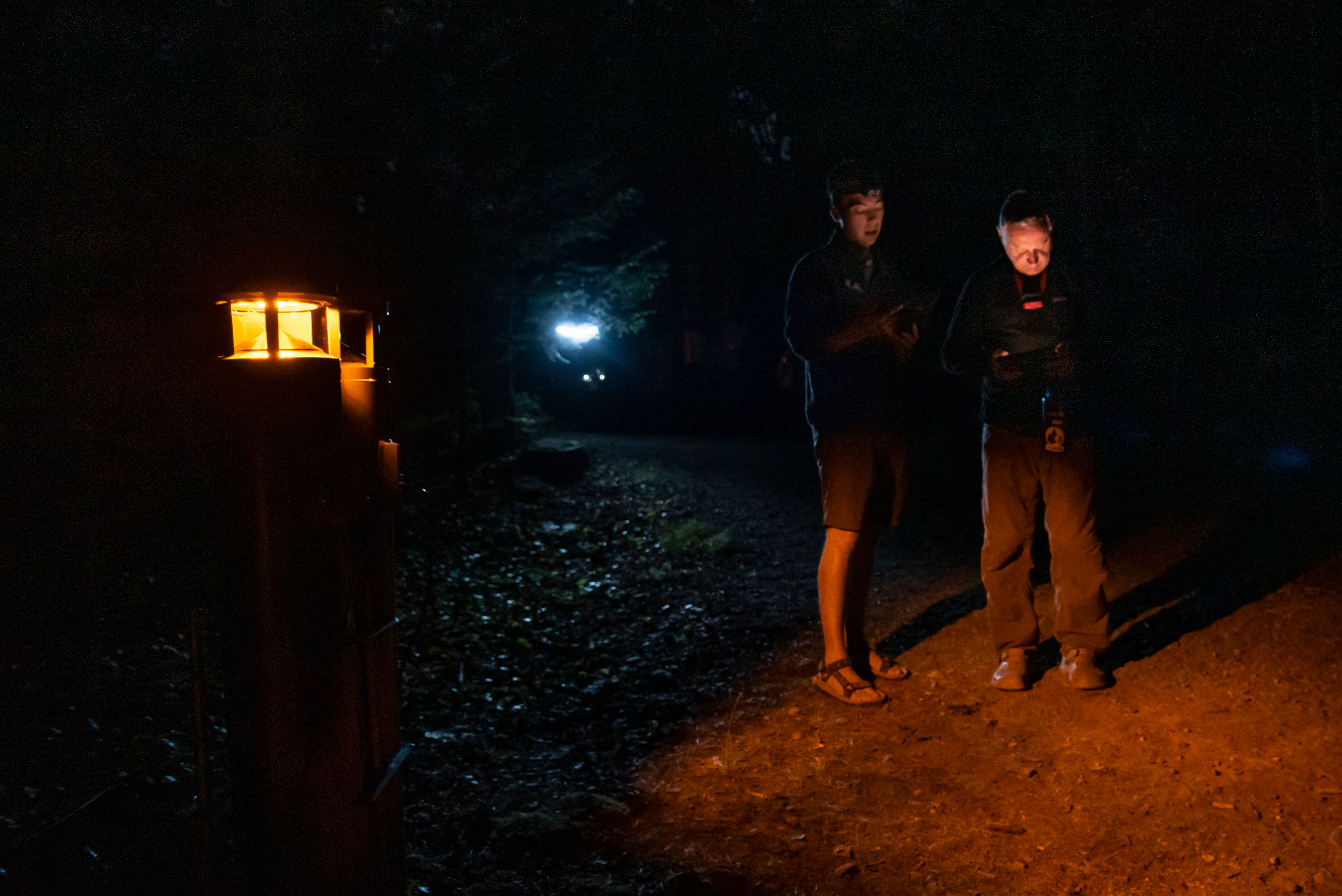Night Sky Research in Acadia
October 31st, 2022
October 31st, 2022

The Milky Way shines above Acadia National Park. (Photo by Ashley L. Conti/Friends of Acadia)
BY ADAM GIBSON AND BIK WHEELER
National parks should be dark at night. They should be places where people connect with nature through views of naturally dark night skies, and where animals can find the nighttime qualities they need for survival.
Acadia National Park is such a place. Recreationists recognize Acadia as a premier place for night-sky views; bats and birds recognize Acadia as a nighttime migration corridor. On two nights this past May, BirdCast (a migration calculator) estimated that more than 2 million birds migrated over Hancock County, and eight days later, over 4 million. This fall’s migration should see even more birds passing over Acadia.
A group of researchers from Boise State and Penn State Universities were awarded a grant from the National Park Service Natural Sounds and Night Skies Division to conduct night-sky research in Acadia and Grand Teton National Parks. The work began in Acadia this summer at Blackwoods Campground and along the carriage road adjacent to Jordan Pond.
The goal of the research is to better understand lighting systems from a social and biological perspective. Namely, when it comes to nighttime lighting, what do people prefer and what will wildlife tolerate?
For example, insects and bats use the nocturnal Acadia landscape every summer night and can serve as indicators for the effects of lights on wildlife. By setting up trial lights and counting bat echolocations, scientists are hoping to find clues about what colors and intensities of lights influence the nocturnal insects and bats, while at the same time measuring how visitors respond to wildlife-friendly lighting designs.

Social Science Data Technician Lane Arthur (left) helps Ken Jones of Bridgewater, MA take a survey along the path to the ocean at Blackwoods Campground. (Photo by Avery Howe/Friends of Acadia)
“Intrusions from sounds and lighting continue to proliferate. Studying the effects of light on people and wildlife allows us to provide data on the best practices for parks and adjacent communities seeking to protect awe-inspiring night skies,” says Peter Newman, researcher and Martin Professor of Recreation Park and Tourism Management at Penn State University.
“As a kid, I spent summers at a camp in Maine. My memories are filled with the stars at night. Our goal as a team of park staff and scientists is to ensure the next generation gets the same opportunities,” he added.
Managing national parks is complex: protect the natural environment while also providing high-quality experiences to visitors. This dual mandate is difficult because visitor use has environmental impacts. Park leaders rise to the challenge by applying science-backed actions and balancing visitor preferences with natural preservation. Once we understand the influences of lighting on both wildlife and visitors, correcting the negative effects may be as simple as changing a lightbulb or flipping a switch.
So, if you encounter a research project in the dark, don’t be alarmed. The friendly social scientists just want to ask you a few questions.
DR. ADAM GIBSON manages the Social Science program at Acadia National Park.
BIK WHEELER manages the Wildlife Biology program at Acadia National Park.